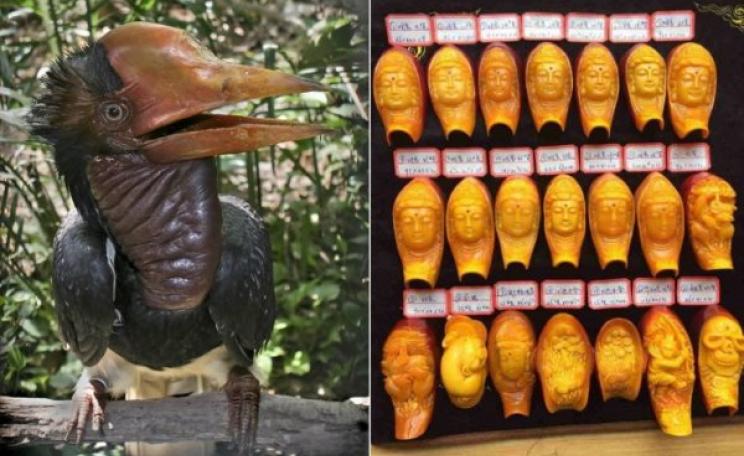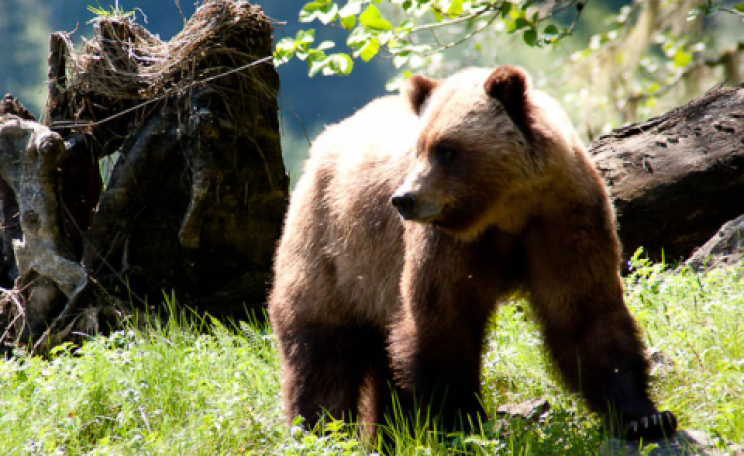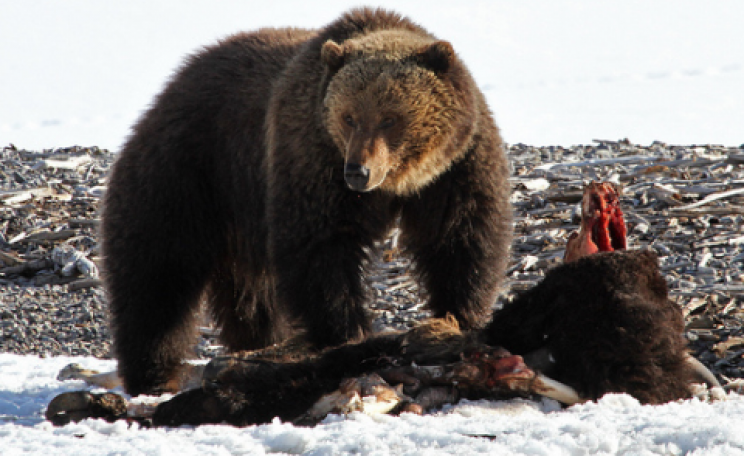The poaching of live rhinos for their horns, although certainly not a new phenomenon, is becoming an ever increasing threat to their survival. Despite an international ban on the trade of rhino horn since 1993, media reports have documented a growing number of incidents over the past few years, cumulating in a record high of 448 rhinos killed in South Africa last year. Compared to the 333 animals that were killed in 2010 and just 15 animals a year on average only a decade ago, this is a worrying trend.
The sharp increase in recent years has been caused by the demand for their use in traditional medicines. Rhino horn has been used for centuries as a perceived cure for fever and rheumatism, but has become more popular as a growing affluent class in countries such as Thailand now have more money to spend on these products. A belief also seems to have taken hold in Vietnam that rhino horn can prevent, and even cure, cancer which, despite a lack of scientific evidence, has fuelled demand in this country too. Consequently, the price of rhino horn has soared to around £60,000 per kilo, twice the value of gold and platinum, and now more valuable on the black market than diamonds and cocaine.
This high value has attracted the attention of extremely organised criminal gangs. Always on the lookout for new and creative opportunities to make quick and easy money, they are now pursuing rhino horns held in museums, auction houses and private collections throughout Europe, including the UK. These gangs are targeting premises, and carrying out research and even hostile reconnaissance before stealing horns in overnight burglaries or ‘smash and grab’ style thefts in broad daylight. Since 2011, there have been 56 successful and 10 attempted thefts in the UK, Portugal, France, Germany, the Czech Republic, Sweden and Belgium.
Among the targets in the UK are Sworder’s Auctioneers in Essex, where in February last year, thieves stole a mounted rhino head worth £50,000. This was followed in May by the theft of a head from the Educational Museum in Surrey, and two horns stolen from the Ipswich Museum in July. Here, the thieves ignored the lavish gold burial masks in the Egyptian gallery and took only the horns, demonstrating their high value. Earlier this year, a display case containing a rhino horn was broken into during opening hours at Norwich Castle, but the thieves were disturbed by two members of the museum staff who managed to recover the horn, although the men escaped.
In Europe, a hunting trophy of a rhino head was stolen from a pub in the Austrian province of Styria just last month. Other targets include the Gothenburg Museum of Natural History in Sweden, the University of Coimbra in Portugal, a museum in Liege in Belgium, and just three weeks after this particular theft, a horn was also stolen from the Royal Belgian Institute for National Sciences in Brussels. In France, four thefts from museums were made in 2011, including a particularly violent attack at the Museum of Hunting and Nature in Paris. The theft took place at lunchtime, with local media reporting that a paralysing gas was used on museum guards, who had to be treated in hospital.
At the Offenburg Museum in southwest Germany, rhino horns were stolen in February this year. Two people distracted the museum staff, while another two removed a rhino head from a wall. Just last month it was revealed that three Britons were stopped by Munich police in a stolen car, one of whom, thought to be from London, is accused of being involved in the crime.
Europol have been gathering evidence and intelligence on this new trend as part of their responsibility to monitor developments in the threat from organised crime in Europe. They have identified significant players in the theft of rhino horn as an “Irish and ethnically-Irish organised criminal group, who are known to use intimidation and violence to achieve their ends.” The gangs involved are more commonly associated with drug trafficking, money laundering and smuggling, and have exploited international auction houses in the UK, France, China and the USA to sell the horns.
In response to this spate of thefts in Britain, the Natural Sciences Collections Association has listed some guidelines on their website for museums displaying rhino horns. They recommend that a security audit is carried out, and “if material is not secure it should be taken off display and put in a secure location.” They also advise not to publicise rhino material, as “thefts have targeted rhino horn that is on display or has been publicised in some way.”
Many museums are also replacing rhino horns with replicas to deter the thieves, including the Natural History Museum at Tring. In August last year, two rhino horns weighing 2kg each were stolen from their collection. Fortunately, the horns had already been replaced with fake horns that look almost identical to the real thing, after staff suspected that they were the subject of hostile reconnaissance just a week earlier. On the black market the horns would have fetched around £240,000, but the fakes were totally worthless.
Science, however, may prove the best way to catch those involved in these crimes. A pilot study is currently being undertaken by Dr Lucy Webster at Science and Advice for Scottish Agriculture and Dr Ross McEwing of TRACE Wildlife Forensic Network to create a rhino DNA database for museum specimens. A DNA profiling test is being developed to enable the identification of stolen horns seized by police, even if the horn is in powdered form. DNA will be taken from samples of rhino horn, collected by drilling a small hole into the base of the horn, and stored in the database. Dr Webster explains: 'The rhino DNA database of museum specimens, once established, will allow enforcement to test for a link between the recovered horn and specific theft incidents. If there is a match, investigation can be focused using other forensic evidence, witnesses and suspects from both the theft scene and the smuggling operation. This will help enforcement to untangle the supply chain and identify those responsible from the theft to the attempted shipment.'
A DNA database is currently being used in South Africa to identify horns from white rhinos killed on game reserves, so a museum database would have real potential to tackle the threat of robberies and burglaries from natural history exhibits throughout the country. The museum database could also allow for comparisons to be made between current wild rhino populations, and those from over one hundred years ago, so would be a useful tool for research purposes.
As long as demand for traditional medicine from the Far East continues, the price of rhino horn will remain high, resulting in more and more rhinos being killed in the wild. Yet criminals operating in the UK and Europe do not have to travel far to cash in on this lucrative trade. It can only be hoped that this growing problem of break ins and thefts from museums and other institutions can be tackled with increasing vigilance on their part, and the development of innovative scientific techniques.
| READ MORE... | |
 |
COMMENT Wildlife conservation repeatedly ignores the needs of the poor Gorillas, elephants, tigers - icons of philanthropy and generosity in the west, but also symbols of the damage that modern conservation can inflict on the less industrialised world |
 |
HOW TO MAKE A DIFFERENCE Raoul du Toit: Saving Zimbabwe's black rhino Despite increased poaching threats, a difficult political situation, drought and climate change, Goldman Prize Winner Raoul du Toit has pioneered a new approach in community stakeholding to save the black rhino |
 |
NEWS ANALYSIS The carbon con: the true cost of offsetting Exclusive film looks at allegations that a coal power project in central India, approved under the UN's Clean Development Mechanism, is destroying forests and livelihoods |
 |
HOW TO MAKE A DIFFERENCE WildAid: How to end the illegal wildlife trade WildAid's Steve Trent on why only robust anti-poaching operations, undercover investigations and high profile prosecutions can save the remaining wild rhinos, elephants, tigers and sharks |
 |
NEWS ANALYSIS On patrol with Zimbabwe's wildlife defenders: the last hope for black rhinos? The illegal wildlife trade threatens Zimbabwe's black rhinos with decimation. Ruth Styles reports on the Malilangwe Trust and safari company Singita's attempts to reverse the decline |








